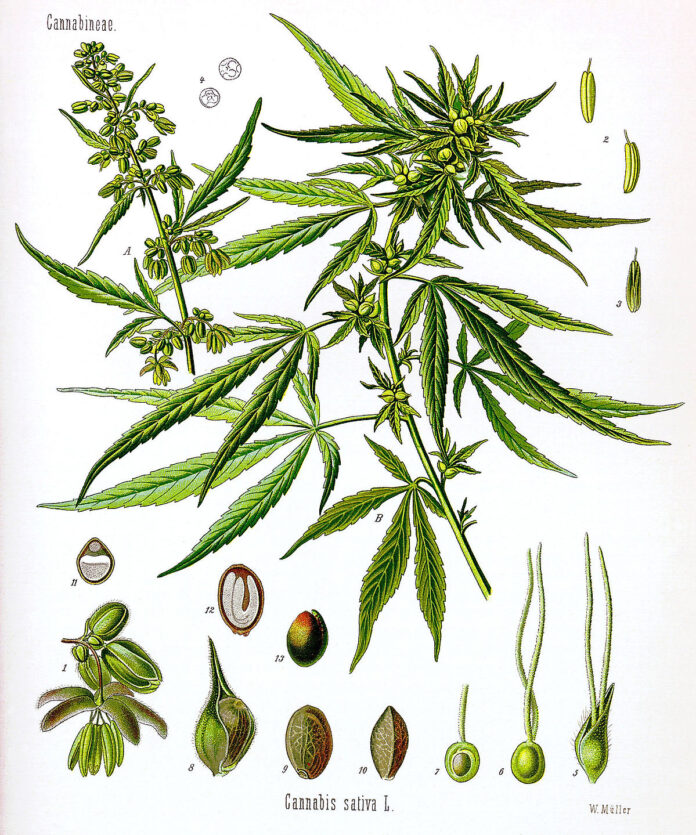Cannabis, also known informally as ganja, weed, or pot, is a flowering plant that originates in Asia. Cannabis is not a classic psychedelic, but its medicinal and mind-expanding properties cause it to be commonly grouped alongside psychedelics. The psychoactive components in cannabis, called cannabinoids, are THC and CBD. These components are unique to cannabis and are not found in any other plants.
What is the cannabis experience like?
Cannabis can be smoked, ingested in food, vaped, or applied topically as an oil. The cannabis experience is wide-ranging and depends on many different factors, including the strain of cannabis (different strains have different ratios of THC to CBD), dosage, set and setting, and body chemistry. In general, euphoria, relaxation, laughter, mood enhancement, sensory enhancement, and increased creativity are common positive reactions to cannabis. Negative reactions can include paranoia, dissociation, depersonalization, memory loss, confusion, and lethargy.
A brief history of cannabis
Cannabis has been used around the world for millennia. The cannabis plant, also known as hemp, has many different functions, including textiles, food, medicines, and spiritual use. Although the plan originates in Asia, it currently grows on every continent, with the exception of Antarctica. While the therapeutic and medicinal benefits of cannabis are well-documented, cannabis has largely been prohibited in most countries since the beginning of the 20th century. In recent decades, a growing recognition of cannabis’ efficacy in treating many conditions, including chronic pain and Parkinson’s disease, has led to a wave of decriminalization and legalization. As of 2021, more and more regions around the world, including many states in in the USA, continue to recognize the benefits of cannabis. The rate of legalization and normalization is increasing.
Cannabis safety
In terms of general safety, cannabis is relatively safe when compared to most substances.
Physical safety
The amount of cannabis needed to cause toxicity in humans is extremely high, meaning that it is nearly impossible to overdose on cannabis. Some evidence suggests that cannabis may be linked to a higher risk of stroke, but the research in this area is not conclusive. Regular smoking of cannabis can exacerbate respiratory problems and can cause lung cancer, although cannabinoids also have anti-cancer properties when isolated and consumed through other methods. There is some evidence that cannabis can have detrimental effects on fetal development, so pregnant and lactating women should avoid cannabis. Long-term users of cannabis sometimes develop cannabinoid hyperemesis syndrome, a condition characterized by intense nausea, cramping, vomiting, and a compulsion to take hot baths. The syndrome subsides with a cessation of cannabis use.
Psychological safety
Chronic use of cannabis can cause a decrease in cognitive function, although full function can usually be restored after a sustained period of abstinence from cannabis. One exception relates to sustained cannabis use during adolescence, which can result in long-term cognitive issues. There is mixed evidence regarding the use of cannabis for anxiety and depression. Some studies have shown an improvement in cannabis users, while others have demonstrated an exacerbation of mental health problems. Chronic cannabis use may also increase risk of psychosis, but a direct causal link has not been full substantiated.
Cannabis Science
Pharmacology
The primary components in cannabis are terpenophenolic compounds called cannabinoids. Cannabinoids function as protective agents against parasites for the plant. Cannabis has over 100 cannabinoids, including CBD (cannabidiol), THC (delta-9-tetrahydrocannabinol), CBN (cannabinol), CBC (cannabichromene), and CBG (cannabigerol). Many of the cannabinoids are not psychoactive but have other therapeutic qualities. THC is the primary psychoactive cannabinoid in cannabis.
Unlike classic psychedelics, which interact with serotonin receptors in the brain, cannabis interacts with two cannabinoid receptors, CB1 and CB2. Cannabinoid receptors are located in the body’s central nervous system and also in the immune system. There is also some level of interaction between cannabis and dopamine receptors and opioid agonists.
Therapeutic Use
The many medicinal and therapeutic benefits of cannabis are well-documented, and additional applications are constantly emerging. There is a strong body of evidence supporting the use of cannabis for vomiting and nausea in cancer patients who are undergoing chemotherapy, as well as the treatment of appetite loss and wasting syndrome for patients with HIV and cancer; treatment for multiple sclerosis (MS), neuropathic and chronic pain for fibromyalgia, post-herpetic neuralgia and others. Current studies are also investigating promising evidence into the use of cannabis for treating symptoms of Crohn’s disease, Tourette’s syndrome, irritable bowel syndrome (IBS), spinal cord injuries, attention deficit hyperactive disorder (ADHD), post-traumatic stress disorder (PTSD), glaucoma, migraine headaches, anxiety, and epilepsy.


